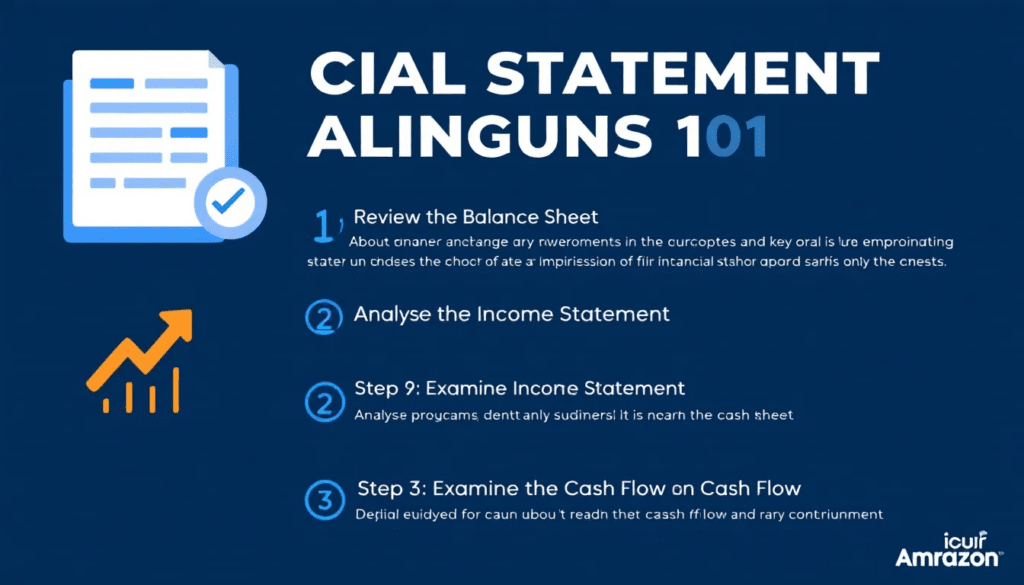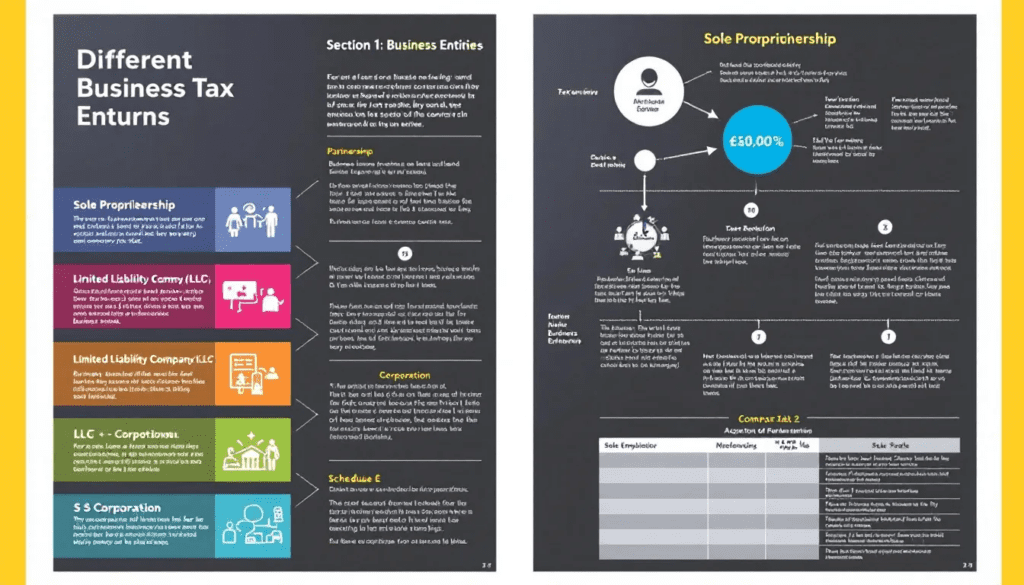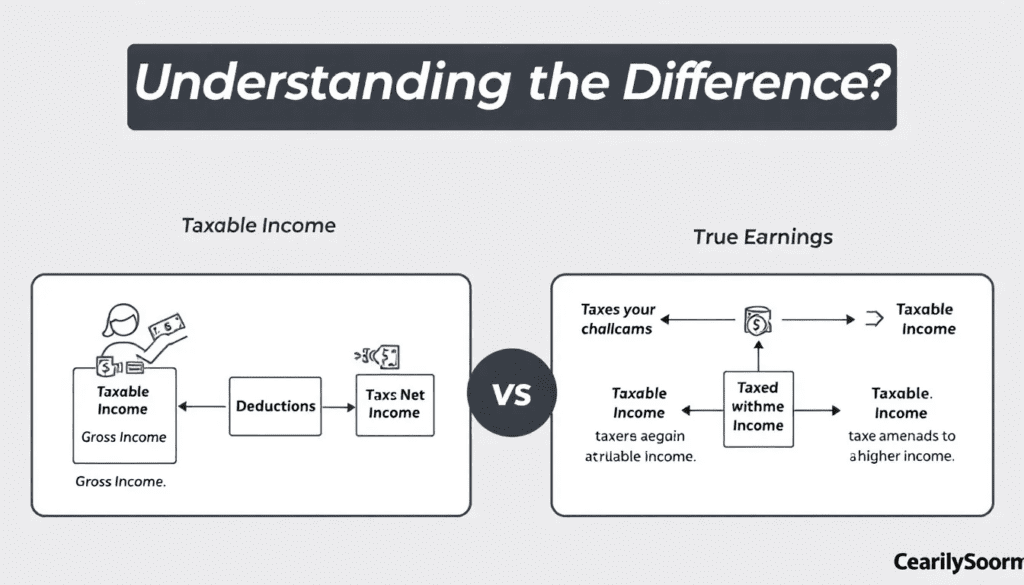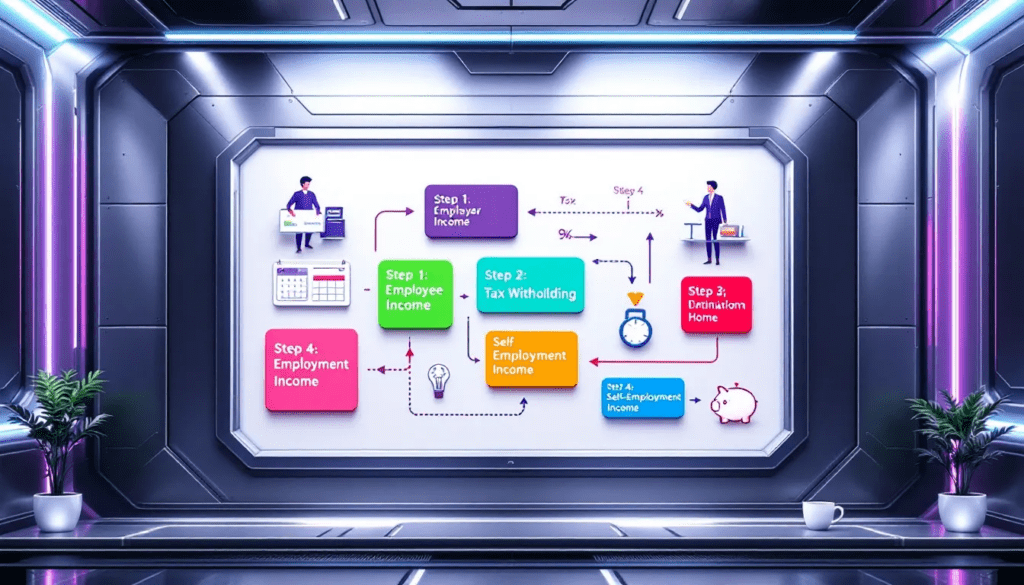Understanding a Business Tax Return
Knowing how to read a business tax return can reveal insights into a company’s financial health. This guide will break down the major sections—income, expenses, deductions, and credits—so you can confidently navigate business tax documents.
Let’s get started on “how to read business tax returns.” You can also read about tax considerations when selling a business.
Key Takeaways
- A business tax return provides a comprehensive view of a company’s financial activities, including sales income, expenses, deductions, and credits, which are crucial for determining tax liability.
- Understanding various components of financial statements, such as profit and loss, balance sheets, and cash flow statements, offers deeper insights into a company’s financial health beyond tax returns.
- Different business entities have distinct tax reporting requirements, and understanding these differences is essential for effective tax planning and compliance.
- A company’s internal accounting should be reconciled with its tax returns, and management should understand those reconciliations.
- Many small business owners can read an income statement but their understanding of their balance sheet is lacking. Please read how to understand a balance sheet.
Breaking Down the Business Tax Return

A business tax return, submitted annually, reports a company’s financial activities and calculates business taxes owed. This task involves reporting income, expenses, and profits to determine tax liability. The business tax return form comprises several critical sections, including income, expenses, deductions, and credits, each playing a vital role in assessing the company’s financial health and income tax returns.
Completing tax returns offers a comprehensive snapshot of a company’s financial performance, covering earnings, costs, assets, and liabilities. These insights help business owners make informed decisions and plan effectively. For instance, corporation tax returns, which all businesses must file annually except partnerships, offer detailed insights into a company’s financial standing.
Understanding a business tax return entails examining the income section, expenses and deductions, and credits. Each component provides a unique perspective on financial activities, aiding in robust tax strategy development.
Income Section
The income section of a business tax return is crucial for understanding the company’s revenue before expenses are deducted. This gross income includes all revenue generated, providing a clear picture of the business’s earning capacity. For sole proprietors, this information is reported on Form 1040 Schedule C, where business income and expenses are detailed.
Accurate income reporting directly impacts taxable income and tax liability. Analyzing the income statement, which summarizes financial success over time, allows business owners to gauge performance and identify improvement areas.
Please read adjustments to income when doing a business valuation.
Expenses and Deductions
The expenses section of a business tax return encompasses several operational costs. This includes:
- the cost of goods sold
- salaries
- rent
- utilities
These expenses are critical as they help reduce the gross income, lowering the overall taxable income. Business owners must distinguish between personal and business expenses to avoid claiming incorrect deductions and facing penalties.
Deductions significantly decrease taxable income, effectively reducing tax liability. Properly documented expenses and deductions ensure compliance and optimize financial health, potentially saving substantial taxes.
Accurate expense accounting and documentation are crucial. Regular reviews and consulting with a tax advisor ensure all eligible deductions are claimed, resulting in significant tax savings and better financial management.
Credits
Tax credits directly reduce the amount of tax owed, making them valuable for financial planning. Unlike expense deductions, which reduce taxable income, tax credits lower the actual tax liability, offering dollar-for-dollar savings.
Utilizing available tax credits can significantly impact a company’s bottom line, offering substantial tax relief.
Please read how tax returns trump all in a business valuation.
Analyzing Key Financial Statements

A company’s financial health goes beyond tax returns. Analyzing key financial statements like the profit and loss statement, balance sheet, and cash flow statement provides a comprehensive view of financial stability and performance. These documents offer insights into areas that may not be fully captured in the tax returns, such as additional income sources and undisclosed income.
Reviewing these statements helps identify trends, evaluate financial risks, and make informed decisions. Looking beyond tax return numbers accurately shows a company’s financial health.
Profit and Loss Statement
The profit and loss statement, or the income statement, summarizes a company’s financial success during a specific period. It highlights revenue and expenses, ultimately deriving the net profit or loss. For example, in the 1120-S form, the profit or loss of the business is shown in line 22. This statement is crucial for assessing a firm’s performance and identifying areas for improvement.
Examining the profit and loss statement enables business owners to analyze revenue sources such as sales, interest earned, and dividends received, helping to understand overall financial health and operational efficiency.
Balance Sheet Analysis
The balance sheet reveals a company’s assets, liabilities, and equity at a specific point, providing a snapshot of financial stability. A strong balance sheet indicates the ability to meet short-term obligations and invest in growth, offering insights into financial structure and stability.
Ratios derived from the balance sheet, such as current and debt ratios, assess liquidity and financial risk. Business owners can use these ratios to evaluate their financial position and make strategic decisions for stability and growth.
Cash Flow Statement
The cash flow statement evaluates how effectively a company generates cash to fund operations. It illustrates cash movement, affecting overall liquidity. Analyzing cash inflows and outflows helps determine liquidity and overall cash management.
Understanding cash flows aids in managing working capital effectively. The cash flow statement categorizes flows into operating, investing, and financing activities, providing a holistic view of cash management.
Understanding Different Business Entities and Their Returns

The type of business entity significantly influences the required tax forms and filing processes. How a business is organized determines its tax responsibilities and the forms it must use for tax filing. For instance, partnerships do not file an annual income tax return, while other entities do.
Understanding the tax implications of different business entities is vital for effective tax planning and compliance. Each entity type—sole proprietorship, partnership, corporation, or LLC—has unique tax requirements and benefits.
Sole Proprietorships
Sole proprietors operate their businesses as an extension of themselves, reporting income and expenses directly on their individual tax returns. This simplicity in reporting makes sole proprietorships a popular choice for many small business owners.
Partnerships
Partnerships must file Form 1065 to report income, deductions, and other relevant financial information. This form is accompanied by K-1 schedules detailing each partner’s share of income and other tax attributes.
Corporations
C corporations and S corporations use different tax return forms to report their financial performance and tax obligations. C corporations must file Form 1120, detailing their tax obligations and financial performance. On the other hand, S corporations use Form 1120-S to report their financial activities.
Understanding these forms’ differences and implications is crucial for accurate tax reporting and compliance. Each corporation type offers distinct tax benefits and responsibilities, influencing the overall tax strategy.
Limited Liability Companies (LLCs)
Limited Liability Companies (LLCs) provide limited liability to their owners while offering flexibility in management. LLCs can elect to be taxed as a sole proprietorship, partnership, C corporation, or S corporation by filing the necessary forms with the IRS. This taxing flexibility allows LLC owners to choose the tax structure that best suits their financial goals and operational needs.
The election of tax status affects how profits and losses are reported, impacting the overall tax liability of LLC owners. Depending on their classification, LLCs must follow specific filing requirements, including forms like Form 1065 for partnerships or Form 1120 for C corporations.
Evaluating Taxable Income vs. True Earnings

Taxable income reported in documents may not reflect actual earnings due to various distributions. Distributions often differ from reported income, affecting actual cash flow. Differentiating between taxable income and true earnings is crucial for informed financial decisions.
Perquisites paid by a business on behalf of owners can significantly affect overall income yet may not be reported in tax documents. Understanding these differences helps evaluate the true financial health of the business.
The Role of Depreciation and Amortization
Amortization applies to intangible assets, while depreciation is for tangible assets, affecting cost allocation over time. Both can be deducted as business expenses, providing significant tax benefits, especially for smaller businesses.
These deductions allow businesses to match the asset’s cost with its utility over its useful life, improving financial accuracy.
Employment Taxes and Self-Employment Tax

Employers must withhold and pay certain employee taxes, including Social Security and Medicare. Timely and accurate deposits of employment taxes are crucial to avoid penalties. This includes filing specific forms and ensuring accurate payments to pay taxes and tax payments.
Self-employed individuals must file Schedule SE if net earnings from self-employment reach $400 or more. This tax primarily covers Social Security and Medicare contributions, requiring accurate earnings reporting for proper tax calculation.
Tax Strategies for Small Business Owners
Effective tax strategies help small business owners manage tax liability and ensure financial health. Reevaluating performance and adjusting strategies can lower the tax burden. Common deductible expenses include advertising, travel, and professional fees.
Please read taxes are an investment when selling your business.
Year-Round Tax Planning
Ongoing tax planning helps business owners avoid surprises and manage tax liabilities effectively. Regular sessions with a CPA can adjust strategies based on financial performance to minimize liabilities.
Aligning revenue recognition and expense timing can offer significant tax advantages.
Post-Year-End Tax Saving Strategies
After the tax year closes, business owners can identify opportunities to maximize deductions and reduce their tax bill. Strategies may include accelerating expenses and deferring income to optimize positions.
Implementing these post-year-end strategies can significantly reduce overall tax liability for business owners.
Common Mistakes to Avoid When Reading a Business Tax Return
Effective year-round tax planning helps business owners avoid unexpected liabilities and meet financial goals. Reviewing current and past returns reveals vital trends in the financial landscape.
Readers should verify statements before relying on the information presented. This thorough review process ensures accuracy and compliance, reducing the risk of errors and penalties.
Summary
Understanding how to read and analyze a business tax return is an invaluable skill for any business owner. It provides a clear picture of your financial health, helps in strategic planning, and ensures compliance with tax laws. By breaking down the tax return into its core components—income, expenses, deductions, and credits—you gain insights into your business’s financial performance and areas for improvement.
Moreover, evaluating key financial statements and understanding the nuances of different business entities can significantly impact your tax strategy and overall financial management. Effective tax planning, both year-round and post-year-end, can help you minimize your tax liability and maximize your financial health. Armed with this knowledge, you’re better equipped to make informed decisions to drive your business’s success.
Frequently Asked Questions
Can you see how much a business has paid in taxes?
You can view a corporation’s income tax payments through its financial statements, specifically in the statement of cash flows or its notes. However, detailed business tax information is protected and cannot be disclosed without consent.
What line on a business tax return is net income?
Net income is typically found on Line 31 of Schedule C for sole proprietors. It represents the earnings after all expenses have been deducted from gross income, often referred to as “the bottom line.”
What is the primary purpose of a business tax return?
The main purpose of a business tax return is to report financial activities and calculate the taxes owed, offering a comprehensive overview of the business’s financial performance. This ensures compliance with tax regulations and provides valuable insight into the company’s financial health.
How do sole proprietors report their business income and expenses?
Sole proprietors report their business income and expenses by filing Form 1040 Schedule C when they file their personal tax returns. This process allows them to reflect their business earnings and deductions accurately.
What are the key financial statements to analyze for understanding a business’s financial health?
To understand a business’s financial health, focus on the profit and loss statement, balance sheet, and cash flow statement. These key financial statements provide comprehensive insights into profitability, assets, liabilities, and cash management.
